If you want to raise vegetables, but don’t have a sunny spot to plant them, you’re still in luck. There are many varieties of vegetables that grow in shade. By shade, we mean two things.
There is either partial sun or partial shade. The former implies the plant prefers at least four hours of sunshine per day but can handle more than that.
The latter applies to shade-tolerant vegetables that want less than four to six hours of direct sun. Doing a little research in advance and checking out our recommendations ensures that you grow plants that don’t mind shade and thrive in spite of the lack of a lot of sun.
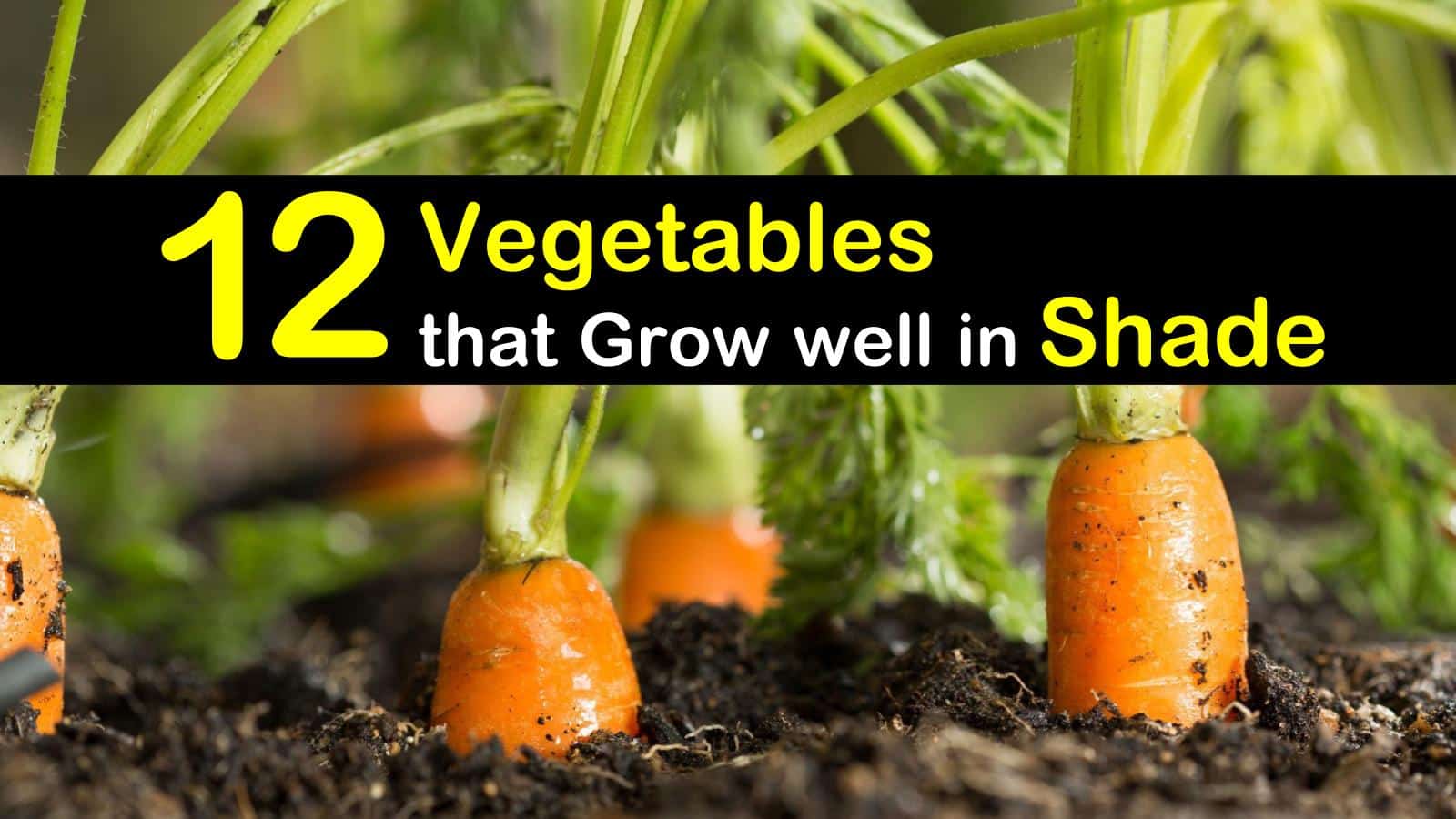
The Best Vegetables for Shade
We’ll begin our list with plants that prefer shaded areas in your garden. Many of these plants are excellent for container vegetable gardening, too. Simply moving them around to shaded areas and to vary your landscape.
When harvesting your veggies, it pays to know the best ways for preserving vegetables so they last. Learn more about refrigerating, freezing, canning, pickling, and drying vegetables so you have them to eat later. You’ll be glad you did.
Bok choy – Chinese Cabbage
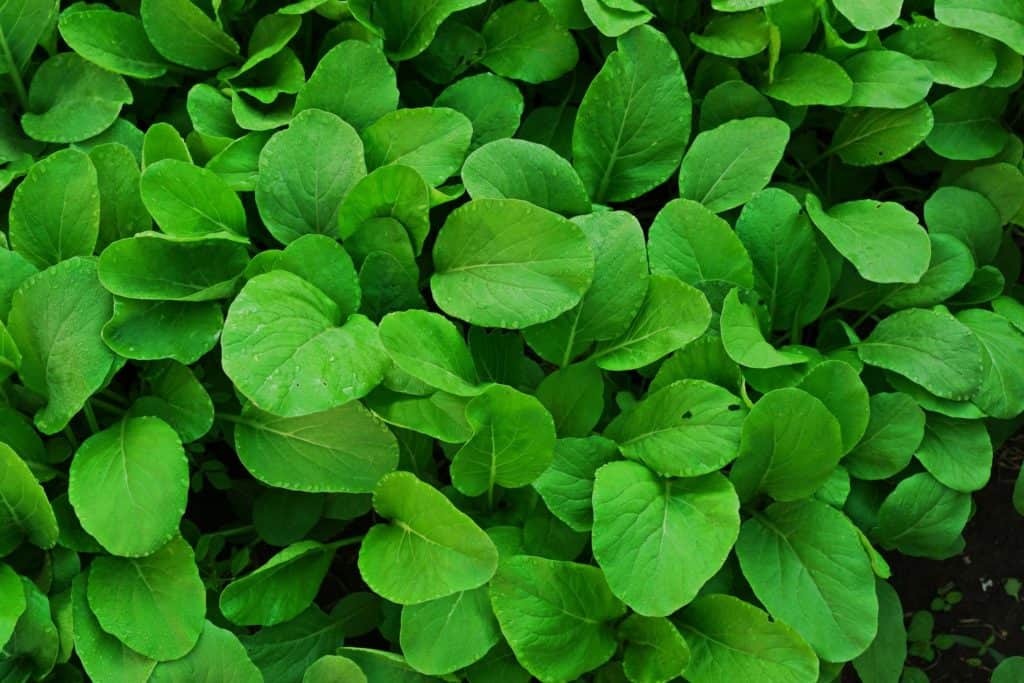
What is bok choy? Bok choy, a type of Chinese cabbage, tastes delicious in soups and salads. And it’s effortless to grow in dappled sunlight or shade. It only needs two hours of sunlight per day to develop its characteristic green leaves, so partially shaded locations are ideal.
Plant bok choy seeds, or sprout the veggie from roots in water. These vegetables to plant in spring also do well in fall. Bok choy likes cool weather. Within a month and a half, the plants will reach a foot or foot and a half in height. Then, you can harvest it for your stir-fry or other favorite recipe.
Broccoli
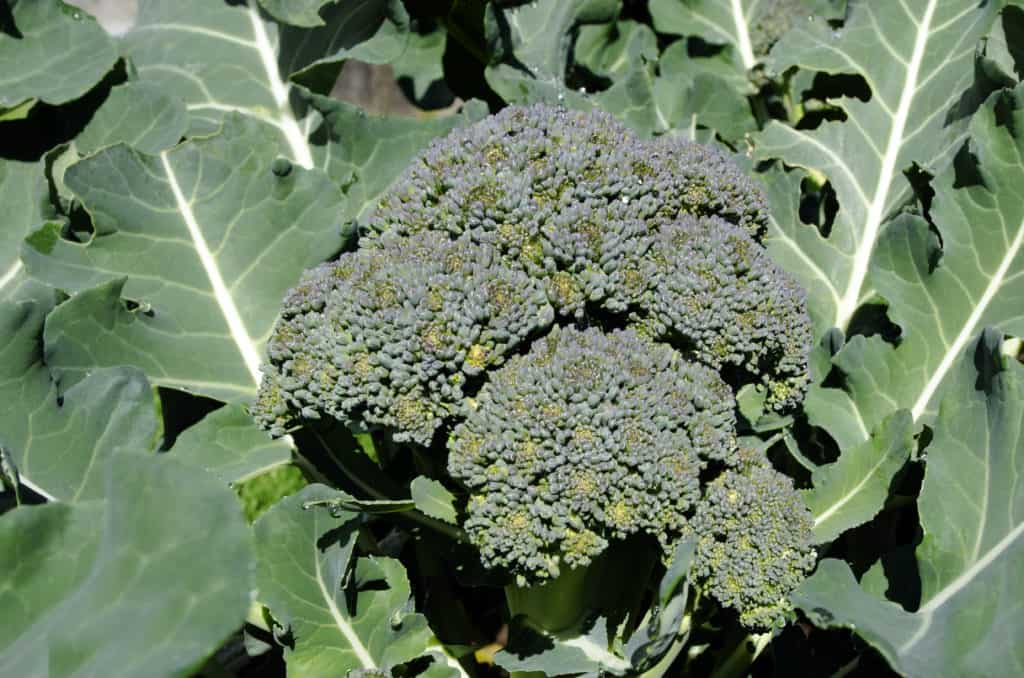
Broccoli likes to grow in cold weather and doesn’t mind if temperatures drop below freezing. The best way to grow broccoli is to plant it in well-drained, rich soil and choose an area with at least one or two hours of direct light. Or, instead of bright sunlight, you can make do with a few hours of indirect light, too.
While broccoli will produce in shady gardens, you won’t harvest a bumper crop. It is also an excellent vegetable for companion planting next to carrots and onions.

Both veggies also grow very well in shade. The heads will be fewer and smaller with less light. But that fact won’t alter the flavor at all. Here are our tips on how to freeze broccoli if you have an abundance of the vegetable.
Cauliflower

Though broccoli and cauliflower which are not the same plant, they prefer cooler temperatures. If the thermometer hovers in the 60s, you should get good results. Learn how far apart to plant cauliflower so the plants aren’t overcrowded which leads to smaller heads.
Cauliflower produces larger heads if it gets six hours of light a day. But it handles shaded plots, too. And when the heads are about 2 inches in size, you’ll want to aid in the blanching process.
That means pulling the leaves up to hide the heads and fastening them closed with a clothespin. This little trick makes the meaty part of the vegetable tender and white. Additionally, plant basil around your cauliflower and broccoli vegetables. These will repel mosquitoes and leaf bugs from your plants.
Cress
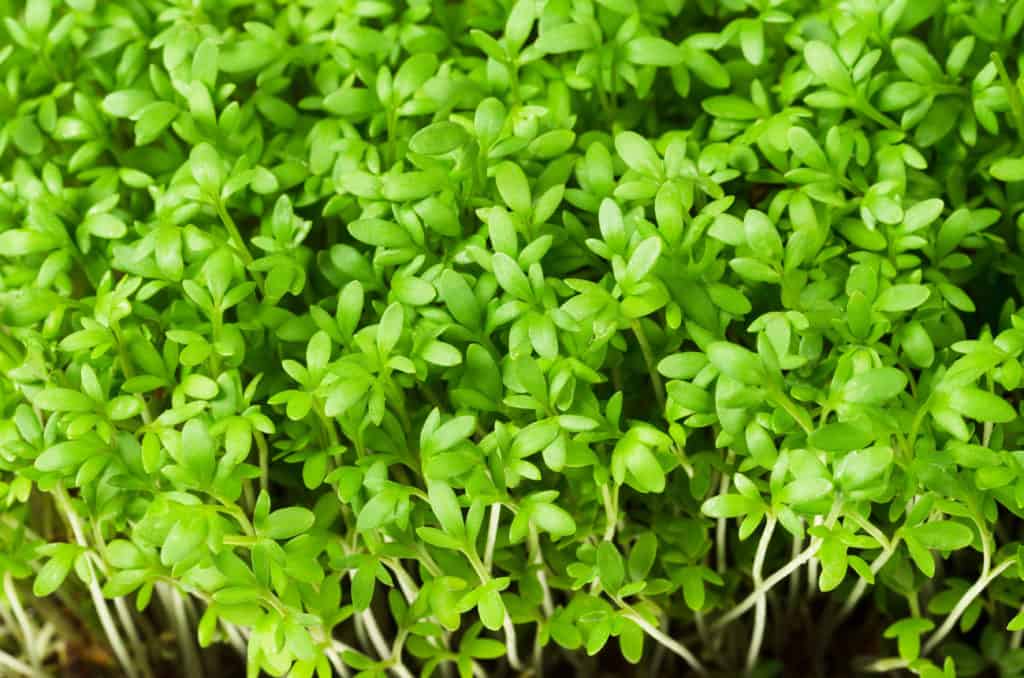
Garden cress loves moist soil, and it grows prolifically. As a matter of fact, it is one of the fastest growing vegetables around. It doesn’t mind if it lives in almost full shade. For these reasons, it’s ideal for container gardens. Grow it along with your favorite best shade loving perennials for added interest and to have cress whenever you want it.
Cress is so easy to grow that your child might raise some as part of a classroom project or it could be a fun project that you could do together. You could even sprout it in a tray on your kitchen countertop and use the cress to garnish a sandwich or spruce up your favorite salad.
Green Onions
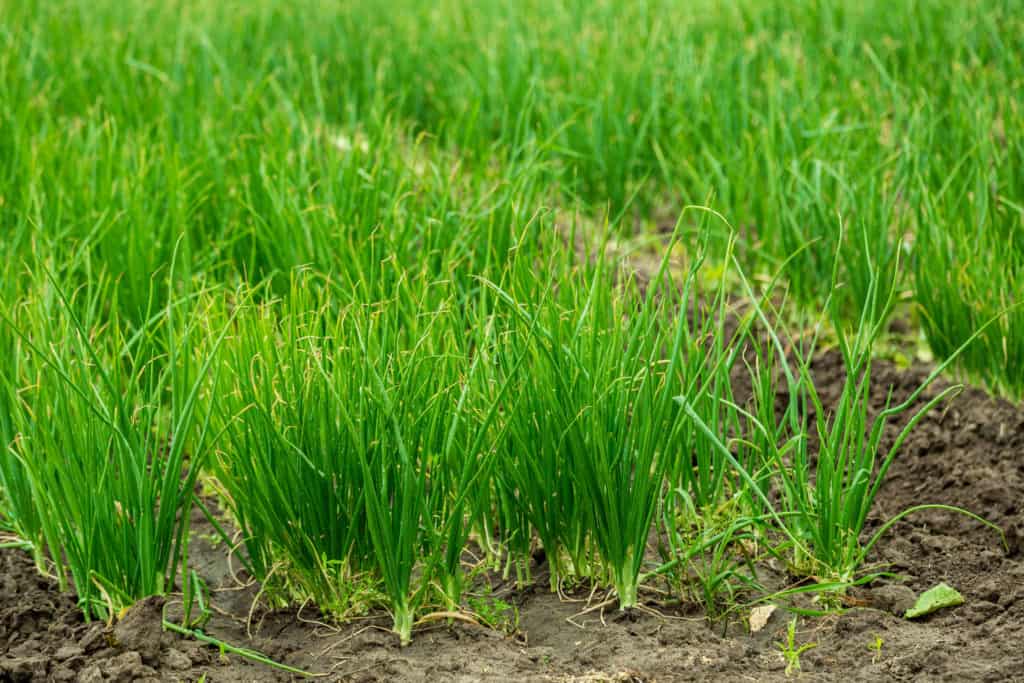
Are scallions and green onions the same? Also known as scallions, green onions are hardy, and they grow fast, whether you are growing onions indoors, in a pot on the patio, or in the garden.
The way to plant onions starts by soaking the roots in a container of water. Then, transplant them to the soil in a plot with partial shade.
These shade loving perennials will blossom in time. And, as a delightful bonus, this green onion flower is luscious in a salad or to top your baked potato along with butter and sour cream.
When growing onions in water only, they do tend to weaken. However, you can always replace them after a trip to the supermarket to pick up a few more. Chop off the bottom about half an inch above the roots and toss that in the jar to start the next batch. You can often grow scallions as perennial crops, too.
When considering chives vs green onions, you can plant chives from seeds, too. They also make an easy-growing crop for the garden in partial shade.
Kale

Recently, different varieties of kale chips were all the rage. It seemed like everyone was baking these leafy greens with a little salt and olive oil. Once you try it, you might never go back to potato chips.
To grow your own batch of kale, plant it in early spring to early summer. Even if you plant these easy garden vegetables in late summer, you can harvest after the frost comes. It tastes better after it survives a cold spell. And it only needs a few hours of light to flourish.
Lettuce

Of the many varieties of lettuce, most thrive in indirect light. This is another plant that grows well in an indoor container garden, not only outdoors in a plot. In fact, some growers will shade their lettuce to prevent it from burning.
Lettuce also prefers cool temperatures. Watch the leaves to see when you need to water. If they appear to be wilting, sprinkle them right away. The water will slow down the transpiration rate.
How long does lettuce take to grow? It depends on the type. Most lettuces are ready to harvest within four to six weeks after planting the seeds.
Radishes
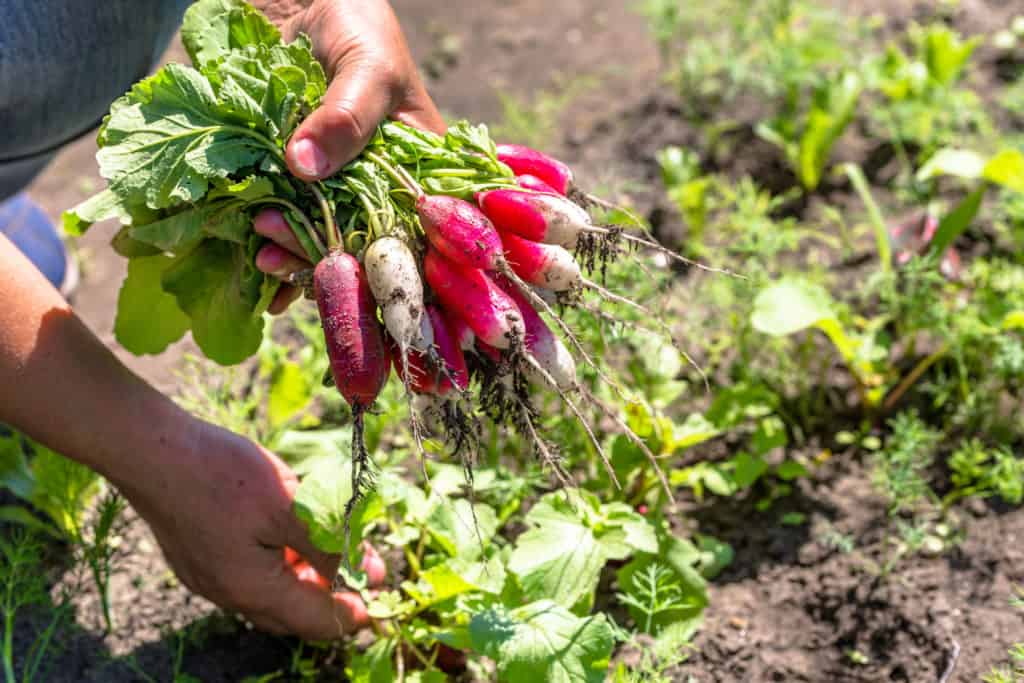
Radishes evoke a reaction. People either love them or hate them. If you adore radishes, then smile because you can raise them in shaded areas. The only consequence of less light is that their roots are smaller and their leaves are more abundant.
Sow radish seeds at the end of the summer or beginning of the fall. If you space out multiple plantings two weeks apart, then you can harvest continuously for a while.
It takes radishes about three to four weeks to mature. Quick Tip: Add some periwinkle plants next to your radishes, these ground cover plants will keep bugs away from the radish leaves.
Spinach

Popeye’s favorite vegetable, spinach, needs a few hours of sunlight to produce healthy, green leaves. But it thrives in spring or fall temperatures. Or, if your winters are mild, you might harvest spinach then, too.
The best way to grow spinach is to plant it near radishes, as the radishes will keep leaf miners away. The bugs will eat the radish foliage above ground instead of the spinach, but that won’t harm the roots. And keep your spinach growing by only pinching off the leaves you want, leaving the rest for another day.
Carrots

Carrots and other root vegetables handle partial sunlight and partial shade with good grace. If you can provide them with six hours of light, they will grow faster. If not, you’ll have to wait longer to harvest them, and you’ll get a smaller yield.
If you plant carrots in rows facing east to west, other plants are less likely to cast shade on them. And keep an eye on the ground. If you can see the orange part exposed, cover it with soil or mulch. Otherwise, that part of the carrot will probably taste bitter.
>> Did you know? Mix old coffee grounds into your garden soil. It is the perfect fertilizer for root crops like carrots and radishes.
If you end up with a bumper crop of carrots, you can store root vegetables in your fridge or the root cellar. Prepare them properly for storage, and they last for weeks, months, or even years.
Peas
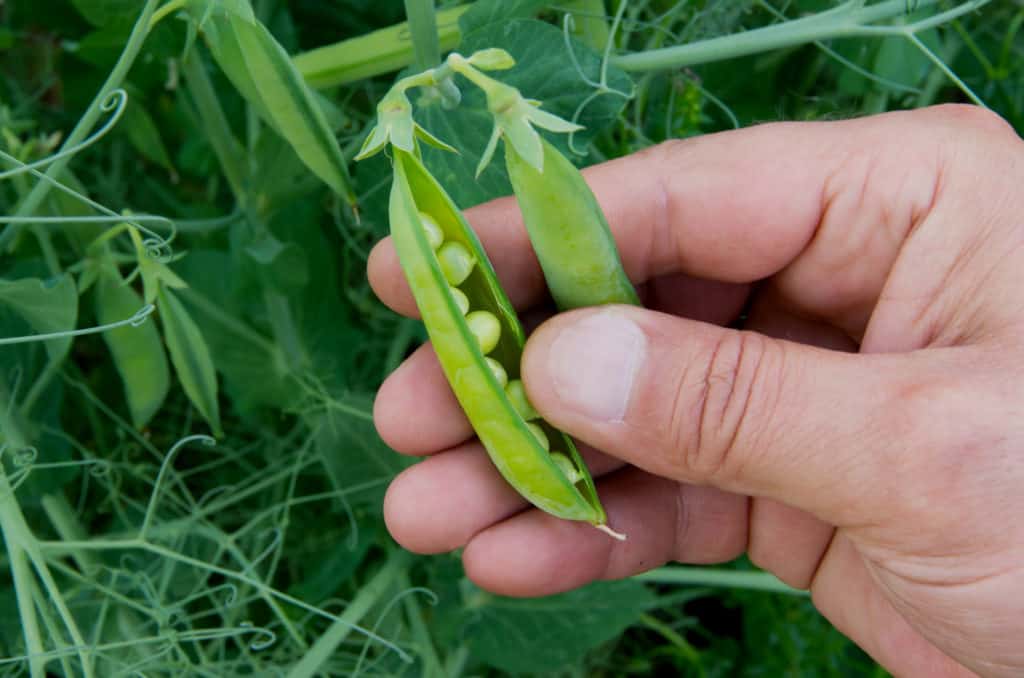
Peas don’t mind shade in the morning or evening but peas sun requirements include five hours of direct sun during the day. You can sow their seeds in early spring even if you expect another frost. Typically, this planting period falls around St. Patrick’s Day, depending on where you live.
As one of the better shrubs for shade, peas often grow in bushy clumps. You sometimes have to move the branches around when picking the peas so you don’t miss any.
These shade flowers for pots or the garden have pretty pink or white blooms before the peas appear and they smell heavenly. As the peas grow, water sparingly unless they appear to wilt. They are helpful to plants around them since they add nitrogen to the soil. Picking the pods will encourage new pods to grow – always a great idea so that you can enjoy them longer.
>> Further Gardening and Landscape Tip: The Aucuba shrub is one of the best plants to grow in shade—the perfect evergreen shrub to mix up your garden.
Potatoes

When growing potatoes from a potato or seed potatoes, the plants need partial sun with five to six hours of sunlight if you want tubers of a decent size. But if you have a sun-dappled spot with four hours of direct light, give them a try. There are several methods for raising them.
Some gardeners prefer to plant potatoes in a raised bed if their soil has poor drainage. Others like using trenches. These root vegetables like 40-50°F soil temperatures. How deep to plant potatoes is important. Remember to “hill” them, or heap extra soil over their roots to protect them from sunburn which makes them taste bitter.
If you are wondering what to grow in the shady parts of your garden, there are at least a dozen vegetables that require less than six hours of sun every day. Some vegetables, like bok choy and green onions, flourish on much less than that. And many of the plants that like less light also thrive in cool weather.

We hope you enjoyed discovering vegetables to raise in your garden. If you liked this article about vegetables that grow well in shade, please share these shade-loving veggies with your friends on Facebook and Pinterest, too.